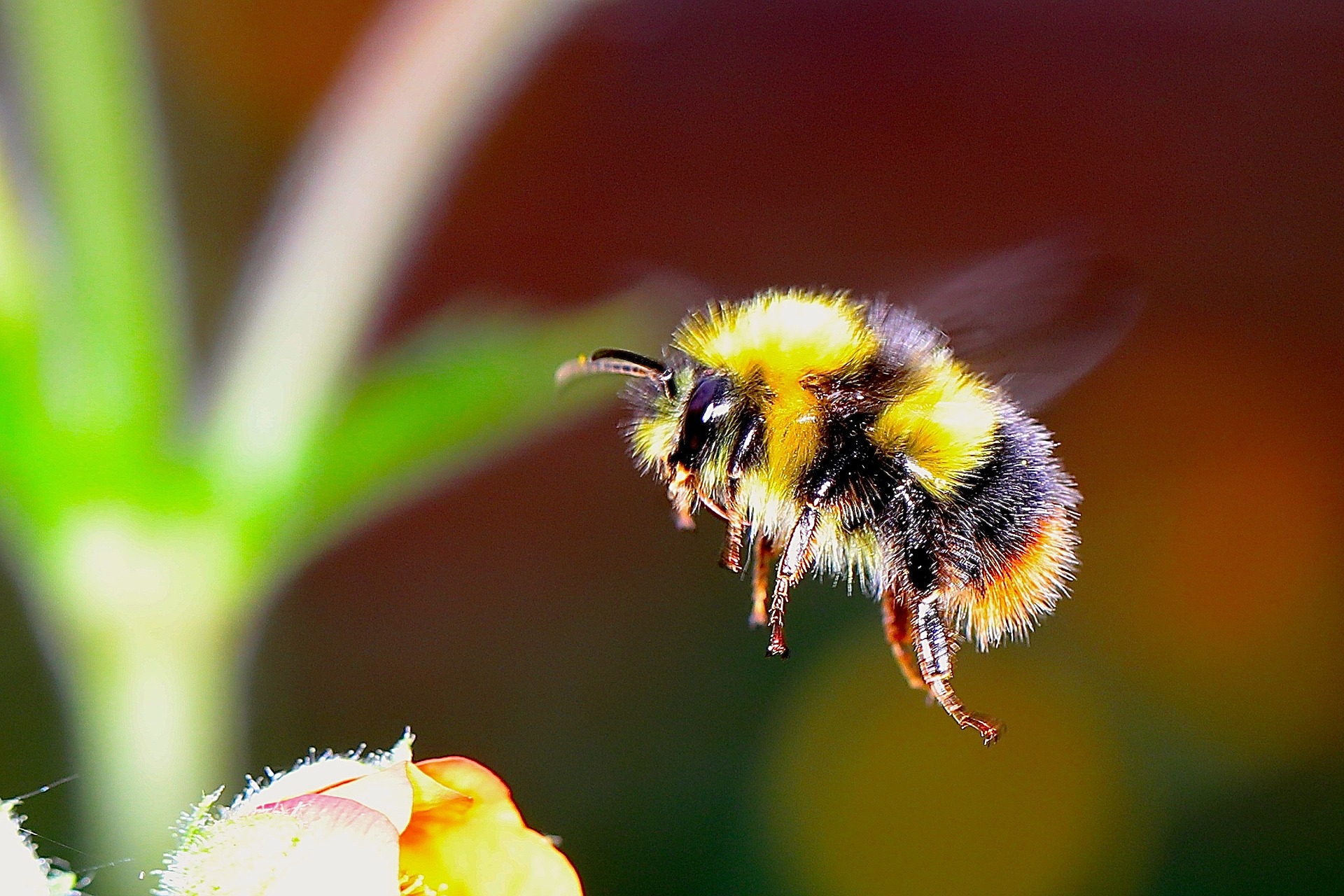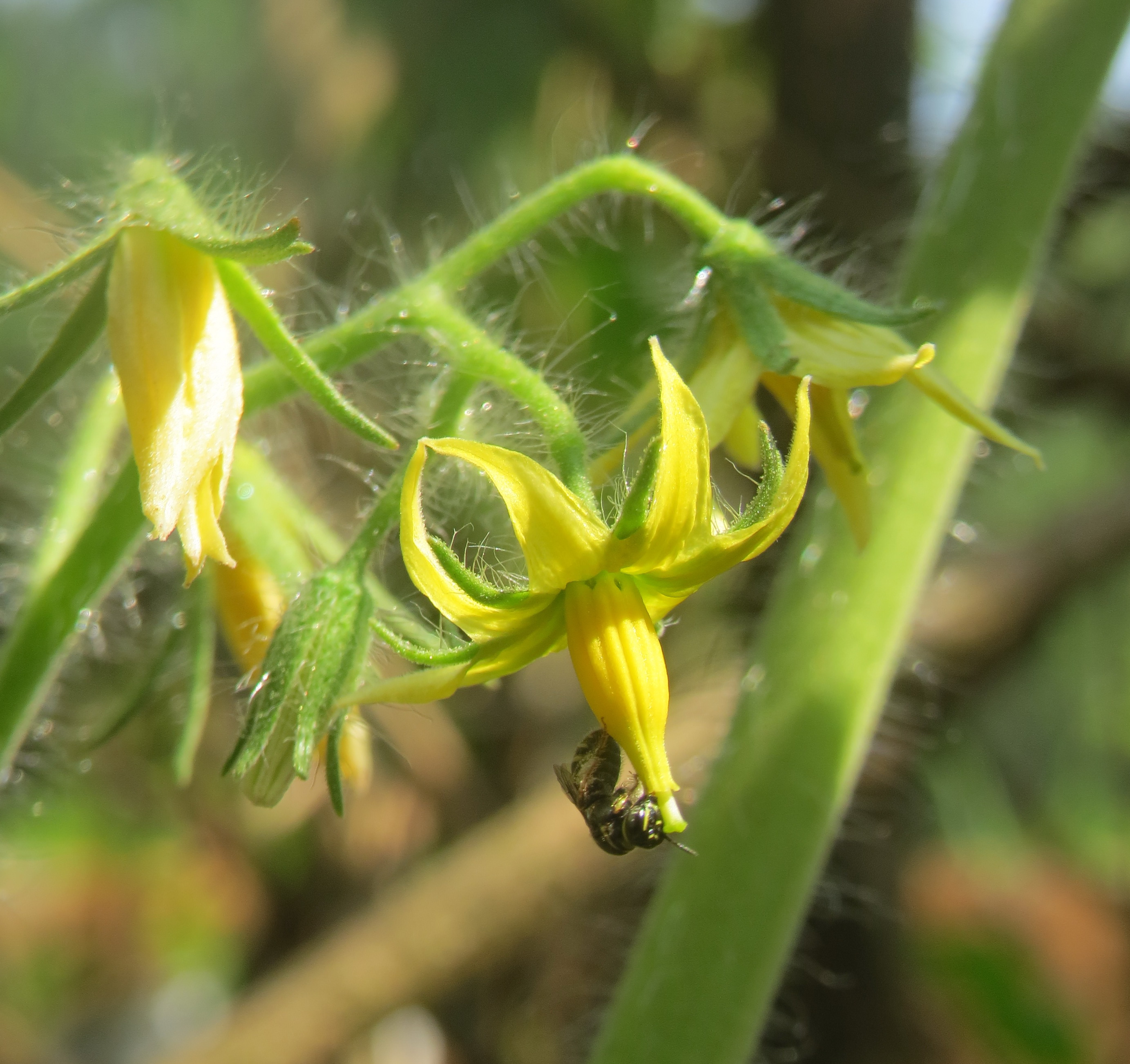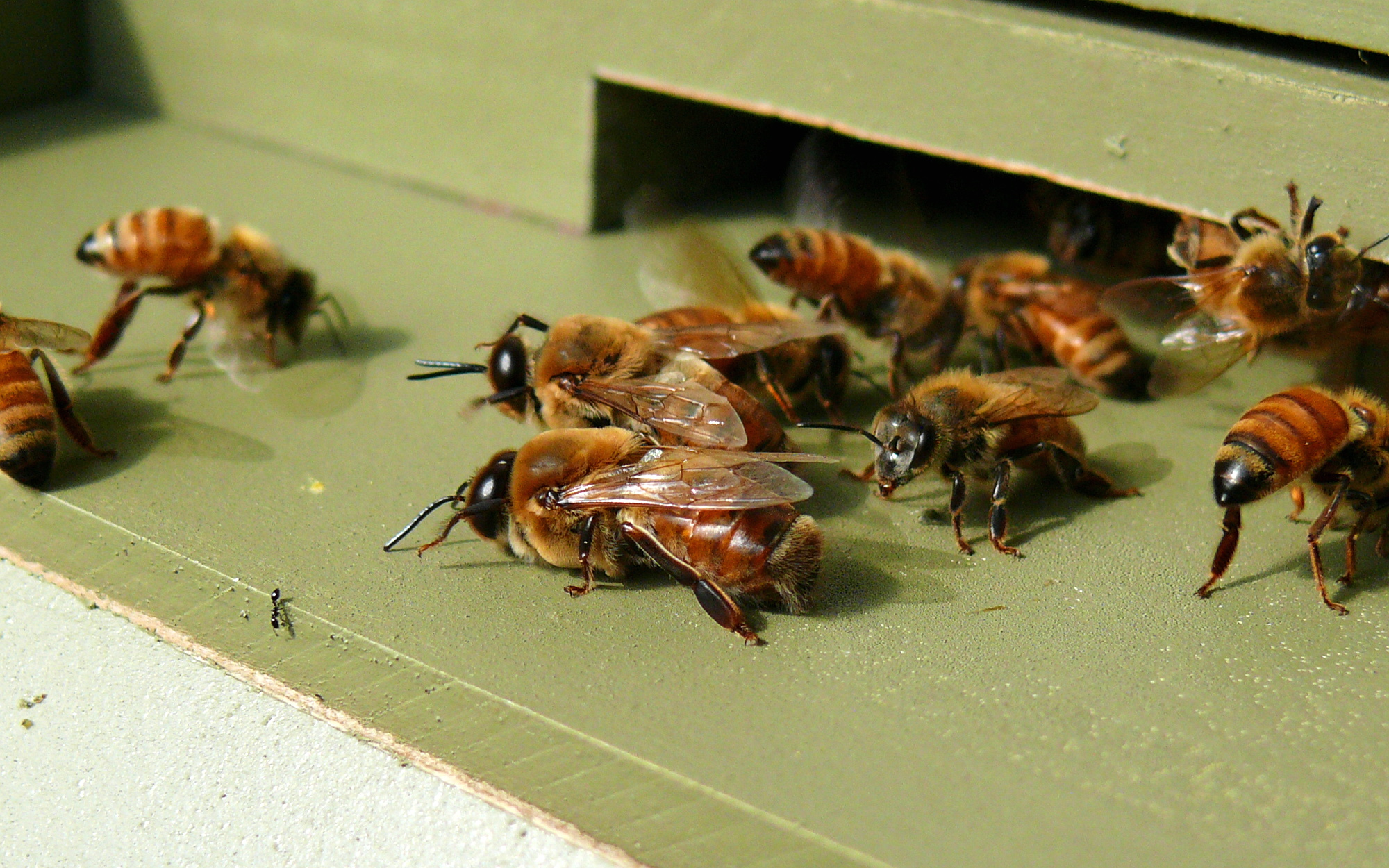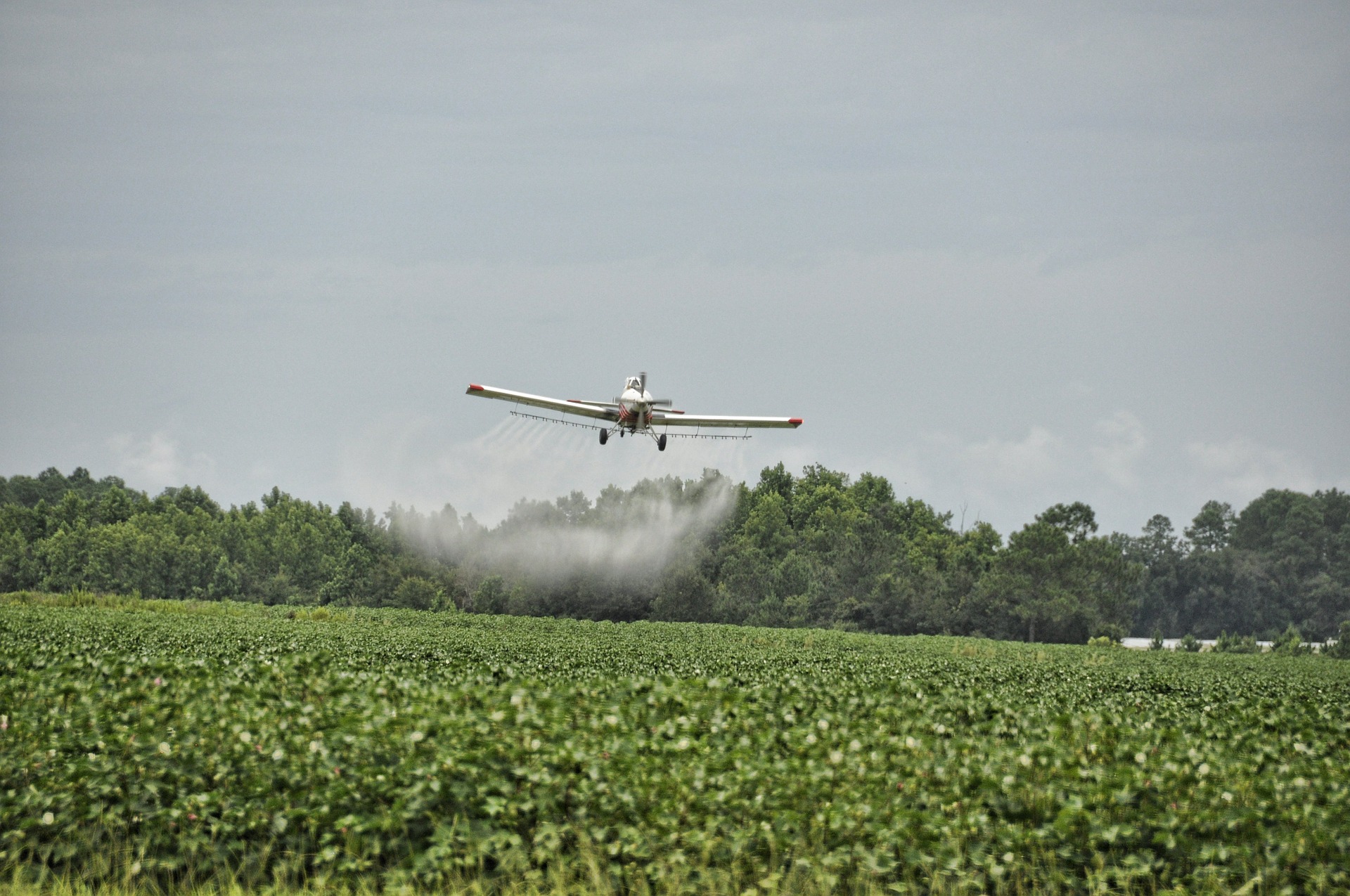Two years ago, when we moved into this house, I planted the beginnings of a butterfly garden. Last summer it didn’t amount to much — the perennials were small and it just didn’t have many winged visitors. There was a little more interest this summer; I’ve had several types of swallowtails, lots of cabbage whites and clouded sulphurs and even a few monarchs. Lately though, in mid-September, I have had dozens and dozens of types of bees along with my butterflies.

My prior vision of bees had been limited to that of the busy brown honeybee and the big, fuzzy black and yellow bumblebee. Noticing so many that didn’t fit into those two categories, I did some quick research and found out how little I knew about bees. The reality is that in the United States alone there are over 4,000 species of native bees. (Worldwide there are over 25,000 known species of bees.)


Surprisingly, the familiar and active honeybee found all across the country is not native to North America. Shipments of honeybee hives were intentionally brought from Western Europe to the east coast of the United States in the early 1600s. Although it took many years (historical records indicate over 200 years), intense struggles against unsuitable environmental conditions, native insect and animal competitors and human interventions, honey bees eventually crossed the continent and became an essential part of American agriculture and life.

Here in the United States over 90 different types of crops depend on bees for pollination. Illustrated another way, one in three bites of all of the food we consume depends on bees to pollinate the blooms. Several crops, such as almonds, pears and rape, from which canola oil is made, rely on honey bees as their primary pollinator, but native bees are also our unsung pollination heroes. A honey bee can’t pollinate a tomato plant, but bumblebees and mud bees can. To increase yields, blueberries need the assistance of at least three different species of bees, two of them native. Bees — all bees — are truly essential creatures.

In the past, I associated bees just with summertime, assuming that’s when they were the busiest doing their work of pollinating plants, making honey and viciously stinging unsuspecting people. This influx of fall bees on my asters sparked my curiosity about what these fascinating and vital insects were up to this time of year. Why so many now, when the cycle of gardening is winding down?

It turns out that fall work is critical to the survival of the non-native honeybee Late blooming flowers like asters, chrysanthemums, goldenrod and dittany are last minute sources of nectar and pollen, both of which are stored for winter food supplies. The nectar, which provides carbohydrates, and the pollen, which is the protein source, are stored in cells in the hive. If sufficient food is stored for winter consumption, then the colony of bees has a better chance of surviving harsh winter conditions and emerging strong in the spring.

Since a typical colony has over 60,000 worker bees, a queen and a few hundred drones (male bees), quite a bit of food needs to be gathered and stored. Interestingly, as winter food supplies are being accumulated, the workers drag the drones out of the hive and prevent them from returning. Although the drones starve to death, the rest of the hive population has a better chance of surviving.

And bee survival is at risk. Since 2006, records show that each year about one-third of all of our domesticated honey bees and their colonies disappear. Some experienced colony collapse disorder, CCD, which is a situation in which the majority of the workers abandon the queen, eggs and larvae for unknown reasons. Other colonies seem to have contracted diseases or parasitic infestations that proved fatal.

Unfortunately, the trend toward hive loss continues today. Although CCD and health issues remain, entomologists believe that other factors also contribute to the decline and loss of honey bee colonies. Experts report that “poor nutrition and pesticides” are also factors affecting both honey bees and native bees. They warn that decline in pollinators will contribute to a drop in food production and a rise in food prices.

Because bee health is both an environmental and an economic issue, it is important that each of us who are gardeners do what we can to help. Creating pollinator gardens with both native and ornamental plants, adding water sources and reducing pesticide use are three easy and effective first steps in rebuilding bee habitats and saving bee colonies.

Join us next week as we explore more about bees and about some of the best plants and garden design tips for bringing a variety of native and non-native bees to your yard. See you then.
